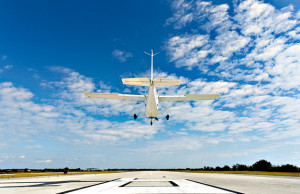Both pilots and flight instructors alike need to always be open to new ideas in order to become better and safer pilots. Moreover, performing a proper and safe landing is one of the more difficult tasks faced by both new and experienced pilots.
Hence, a recent post by John Ewing for Aviation Mentor is well worth reading because he describes a landing technique that a student, one with an inconsistent landing performance, had introduced him to after he found it on the internet. The technique is known as Jacobson Flare. According to John:
Jacobson uses the pilot’s Eye-to-Wheel Height (or EWH, based on the aircraft type), the pilot’s offset from the main landing gear (also based on aircraft type), the airplane’s approach angle (usually 3 or 4 degrees), and simple geometry to determine visual references on the runway surface where the pilot can aim and begin the landing flare.
After downloading and reading the material, John then had the opportunity to try out the technique with another instructor who on her first landing, mentioned that she had to suppress some of her normal landing instincts. However, her landing was very good and her second landing was even better and just about perfect. The next day, John and another instructor tried the technique again with the same performance results. Finally, John’s student with the inconsistent landing performance tried the technique and had nearly the same results.
Towards the end of his post, John concluded that:
It’s my considered opinion that pilots who learn to apply Jacobson’s techniques can make consistently good landings, provided they know how to configure their aircraft and fly a stable approach at the appropriate airspeed. Pilots still have to develop and maintain a feel for their aircraft and learn how to handle crosswinds and gusty conditions, but Jacobson’s procedure is very useful. And when you haven’t flown in several weeks or it’s your first landing in a new-to-you aircraft type, Jacobson’s approach gives you something on which to hang your hat.
However, John noted that there still is not much data for using the technique with newer aircraft and hence he is putting together a spreadsheet of measurements for some of the aircraft that he flies. Moreover, he noted that its also wise to have a flight instructor along before performing a new technique with your aircraft.
